Spring is just around the corner, and we will help you get your skin looking its best as you get ready to bare a lot more of it!
From the latest laser procedures and dermal fillers you can find at our office, to our extensive line of SkinCeuticals products, we’ve got the stuff you need.
We’re stuck in that crazy phase where winter is almost over, but it’s not quite spring. It’s kind of like when Britney Spears was not a girl, not yet a woman. One day it’s sunny, and the next day it’s snowing. One week it’s 60 degrees, the next week it’s polar vortex status, and the frequent changes absolutely wreak havoc on our skin. Sigh.

Reasons why Your Skin Needs Help!!:
If your skin is dry and dull: No matter how much the temperature drops, your skin still needs a boost in cell turnover.
Rule #1: Don’t stop resurfacing. I don’t mean abrasive scrubs—the appropriate and consistent “resurfacing” products will keep your skin looking dewy, hydrated, smooth, and glowing without creating microscopic tears and abrasions. Think retinoids and acid combinations such as glycolic, salicylic, and azaleic acids. If the weather is really cold, then dial down on frequency or strength, but do not stop resurfacing. I also recommend using a proteolytic enzyme once or twice weekly. Proteolytic enzymes are “smart exfoliators” since they only digest dead or diseased cells and cannot disturb healthy, newer cells. Even very sensitive skin types can tolerate proteolytic enzymes.
Rule #2: Adjust your hydration. Oftentimes, individuals simply trade up from a lighter moisturizer to one that is heavier. Think layers—when you layer clothing, instead of just one heavy outer garment, you stay warmer because more heat is trapped between the layers. Likewise, when you layer hydrators you trap more moisture, prevent moisture loss, and provide a more effective barrier against the elements. Try a lighter serum or cream that is packed with peptides and anti-inflammatories under a heavier barrier cream, topped by sunscreen.
If your skin is oily: The typical conundrum here is that the skin is oily, but actually looks dull and surface dry, primarily due to wind and colder temperatures. You’re not necessarily producing less oil, but it’s getting trapped in the dead surface layer and your skin appears duller and even your pores are more noticeable.
Rule #1: Exfoliate. Here again, the key is resurfacing. A resurfacing product, with the right combination of acids, will remove the dead surface skin without abrasion and keep your pores unblocked and looking smaller and more refined.
Rule #2: Do not abandon your acne meds. If you have breakouts, select a product that is non-drying and treats acne and aging at the same time. Once or twice a week an enzyme mask or a Retinol mask will provide further skin refinement and help make skin look dewy and luminous instead of simply oily.
If your skin has redness: Stop aggravating, start soothing!
Rule #1: Anti-inflame. Skin that has persistent periods of redness and little red capillaries may be experiencing mild to moderate rosacea. The causative factors in rosacea are varied and complex. However, it is believed that individuals with this tendency produce more of a type of inflammatory protein. The key here is to use products with lots of anti-inflammatory properties such as green tea, red tea, and ascorbyl palmitate.
Rule #2: Be gentle. Your skin also needs lots of barrier protection to prevent moisture loss and enable your skin to more effectively defend itself from transitional elements. Select products according to how dry or oily your skin is. Remember to lay lighter serums under more protective creams.
Rule #3: Sunscreen is an absolute must! The sun’s rays can still penetrate, even on the gloomiest day and UV rays equal inflammation, which sets up conditions that cause and exacerbate rosacea type tendencies.
Have you ever wondered why some people get wrinkles at a young age and others don’t? There are many answers to this question – smoking can cause wrinkles to form sooner, and if you don’t wear sunscreen when you’re young, you can expect signs of aging to surface earlier rather than later. But a new study finds another potential cause of early facial lines – the genes we get from our mothers.
What your mama gave you
For some time now, it’s been known that the mitochondria, often referred to as the “powerhouses” of the cells that make up our bodies, have a lot to do with aging. As these mitochondria sustain damage, they mutate and lose their ability to produce energy, resulting in the breakdown of the cells that leads to signs of aging.
The new study, published in the journal Nature, finds that the mitochondrial DNA passed down to us from our mothers also influences our own rate of aging. In other words, if your mother had wrinkles at a young age, you might be more likely to see fine lines on your own face in your early years. On the flip side, if your mother had smooth, blemish-free skin well into her 40s or 50s, you could be in for the same luck.
Looking to the future
This study focused solely on cell aging and genetics, but researchers hope that it may help future development of therapeutic interventions that could focus on mitochondrial function, thus slowing the aging process. Unfortunately, such developments probably won’t be available for some time until more research can be conducted.
However, there are certain cosmetic procedures available today that can help people who show signs of premature aging. No matter whether you want long-term results that target deep facial lines or something less invasive that treats fine lines, you can likely benefit from a visit to a board-certified plastic surgeon’s office.
For example, Botox injections, which have become immensely popular over the past few years, offer results that last for several months. This means you won’t have to make a big commitment like you would if you chose to undergo facelift surgery, but on the downside, you’ll need to continue to get injections of the substance to keep wrinkles at bay.
This information is brought to you courtesy of Dr. Mark Bishara and The Paragon Plastic Surgery & Med Spa in Mansfield and Southlake, TX
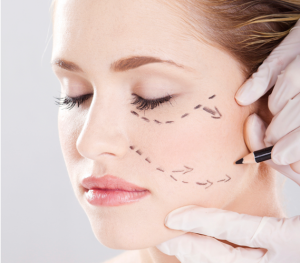
As gravity takes its toll (plus a loosening of the muscles and tissue, as well as changes in the amount and positioning of fat), the face and certain areas of it can take on a saggy appearance. Collagen and elastin are essential for firm skin but they both break down over the years. As this happens and fat is lost, there is a weakening of the internal support structure that keeps skin where it needs to be.
Get Rid of A Saggy Neck With A Necklift
Many women simply forget to treat the area below the chin, but nothing screams your age like a saggy neck with wrinkles and bands. Neurotoxins can soften the bands, but the only way to get rid of the turkey wattle is with a necklift. During the procedure, the weak muscles of the neck are tightened up and loose skin is excised. Tightening the neck muscles and skin is key when fixing a saggy neck.
Tighten Lax Skin With A facelift
The only permanent way to fully correct skin laxity in the neck and face is with surgical excision. As we age, the soft tissue of the face deflates and descends creating an aged appearance. Because the fibrous attachments between the skin and the deeper structures are looser in some areas more than others, some parts of the face, like the lower cheeks, midface and neck, may experience more drooping—this accounts for the classic signs of aging: jowls, loose skin on the neck and deep smile lines. A facelift re-elevates and repositions the skin, reclaiming the position it once had. With most facelift surgeries, but not all, volume needs to be restored to the areas where it has been lost from to create a fully rejuvenated look. The face becomes hollow with age and if we just the skin in just tightened and volume isn’t replaced, you can actually look older.
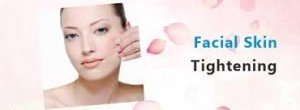
Minimize Loose Skin With Skin Tightening Treatments
Near infrared technology is used to penetrate deep heat to the deepest layers of tissue. This stimulates collagen production and tightens lax skin. Nearly any patient seeking fuller, tighter skin can benefit from laser skin tightening as a safe, noninvasive and effective procedure. The laser skin tightening procedure can be fully customized to help each patient receive the best possible results, depending on the skin condition, size and location of the targeted area and the strength of the laser exposure. Treatments should be performed once every two weeks for a total of 6, followed by quarterly maintenance.
This information brought to you courtesy of Dr. Mark Bishara and The Paragon Plastic Surgery & Med Spa
Retinol is considered the gold standard ingredient in anti-aging products because of it’s proven ability to stimulate and reproduce collagen in the skin. But knowing when and how to use retinol can be confusing.

Why You Need a Daytime Retinol Now
The latest crop of retinol products don’t fight wrinkles and discoloration while you sleep — they do it during the day. Find out how to use retinol, and why you should
Things we love about retinols: They get rid of wrinkles, lighten dark spots, and zap zits better than just about any other skin care ingredient in existence.
Things we hate about retinols: the red, lizard-like skin you get for the first six to eight weeks when you’re using one; having to be maniacal about sunscreen; and only being able to use them at night.
We were downright giddy when we found out there are now daytime retinols (yes, you read correctly) on the market. And dermatologists are calling them a game changer. Throw out everything you thought you knew about how to use retinols. With these new products, you can get all of the benefits of every dermatologist’s favorite skin care ingredient, morning and night, without your skin peeling off your face.
The old:
Let’s talk about retinol. You’ve probably heard of it — in fact, you’re probably stocking some skincare products containing this potent ingredient in your medicine cabinet. So why isn’t everyone using it? And even more importantly, why does a product that promises and actually delivers smoother, brighter and younger looking skin while fighting acne have a semi-bad rap? Long before over-the-counter products were available, you had to purchase retinol in its strongest form: prescription strength Retin-A, a powerful and sometimes harsh treatment. But that was then, and unbelievable skin-changing OTC progress is now.
The new:
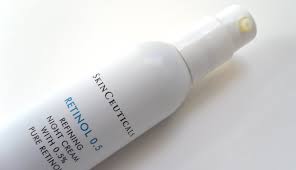
Unlike their predecessors, the new generation of retinol products can be used during the day, as their effects kick in gradually and aren’t as harsh on skin. You still get cell turnover, but it’s in a more controlled way. In addition, new retinols also come mixed with antioxidants, sunscreen and even moisturizers — making them much less irritating than they used to be. (Make sure you continue to be very cautious and diligent about applying SPF, even if you purchase a retinol cream with UV protection, as your skin will be more senstive as it becomes acclimated to the new product.)
Please contact our office for more information on why Retinol is very important: (817) 473-2120.
This information is brought to you courtesy of Dr. Mark Bishara and The Paragon Plastic Surgery & Med Spa

We all have varying degrees of fat in our faces and a multitude of factors can cause changes to these fatty compartments. Volume loss occurs because of gradual changes in the appearance of the fat. There is a loss both superficially and at a deeper level that comes along with aging.
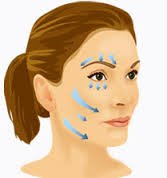
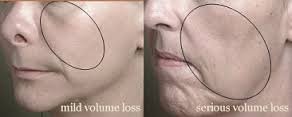
1. Yo-Yo Dieting And Extreme Exercising
Keeping fat off your body is no easy task since the body can’t be told where to lose weight from and where to keep it. So even if you want to “spot-treat” a specific part of the body, you may end up reducing the amount of fat in your face as well. The ups and downs of recurrent dieting cause a stretching of the ligaments that support the tissues of the face. This can result in a loss of elasticity and volume, which promotes an aging effect.
2. Excessive Sun Exposure
Although fat loss is not directly dependent on UV rays, it is important to protect your skin from the sun. If you don’t wear SPF daily, the sun will accelerate the breakdown of collagen and elastin in the skin. When collagen and elastin levels are of poor quality, the condition of the skin is affected and the loss of fat can be accentuated.
3. Hormonal Changes
Female hormones, especially estrogen, are partially responsible for changes in the amount and quality of fat. As hormone levels begin to dip, fat can start to thin out.
4. Too Thin Of A Frame
It is possible to be too skinny. When that’s the case, the aging process will become even more of your enemy than your friend. The reason: A naturally thin face has little natural fat to begin with and over time the inherent amounts of fat begin to diminish, causing an extremely haggard look.
5. Receding Bones
With age, we naturally lose bone mass in the face. The muscles also begin to atrophy to some degree. These changes alter the underlying structure of the face and can cause the cheekbones and midface to look collapsed (the effects usually don’t take hold until later in life). It’s noticeable in the 70- to 80-year-old patient and while it’s highly variable, the majority of resorption happens around the nose and in the central face.
At the office of Dr. Mark Bishara and The Paragon Plastic Surgery & Med Spa we provide a wide range of cosmetic procedures to help patients look and feel their best, including injectables and fillers. These procedures are designed to improve the appearance of volume loss through minimally invasive techniques. Minimally invasive procedures offer patients the results they desire without the hassle and lengthy downtime often associated with cosmetic surgery procedures. We offer patients Botox, Xeomin, Radiesse, Juvederm Ultra Plus XC and the NEW Juvederm Voluma to help reduce or eliminate the signs of aging on their face. Please call our office to see which product would be best for you at (817) 473-2120 or visit our website at www.MarkBisharaMD.com for more information on these.




